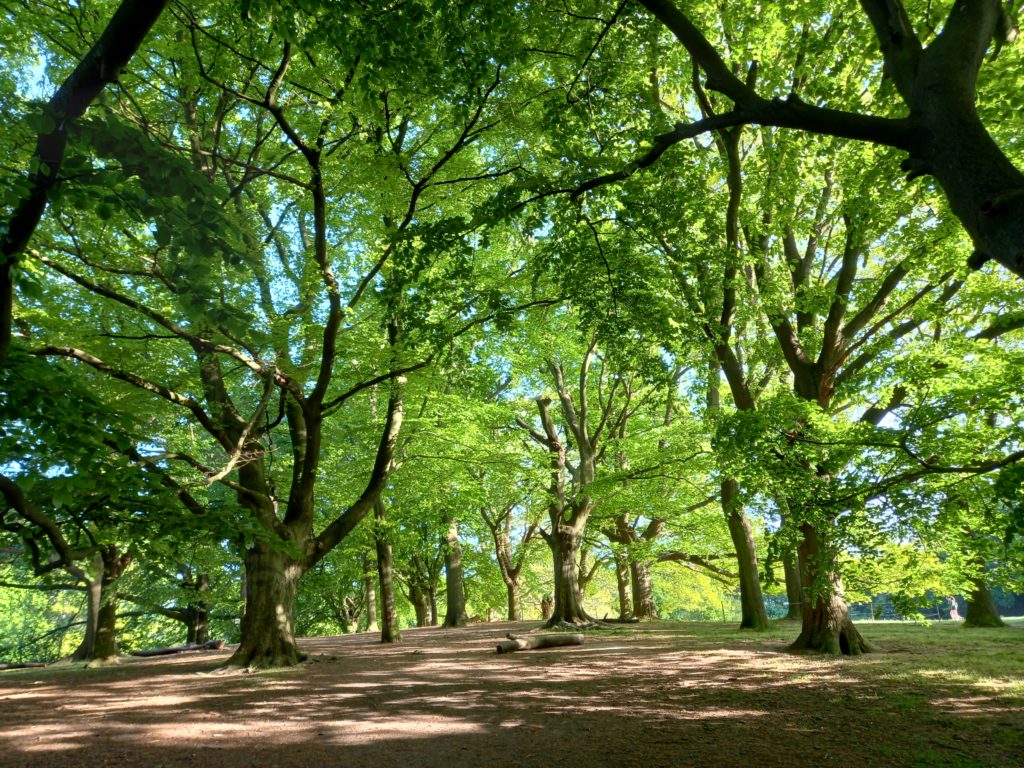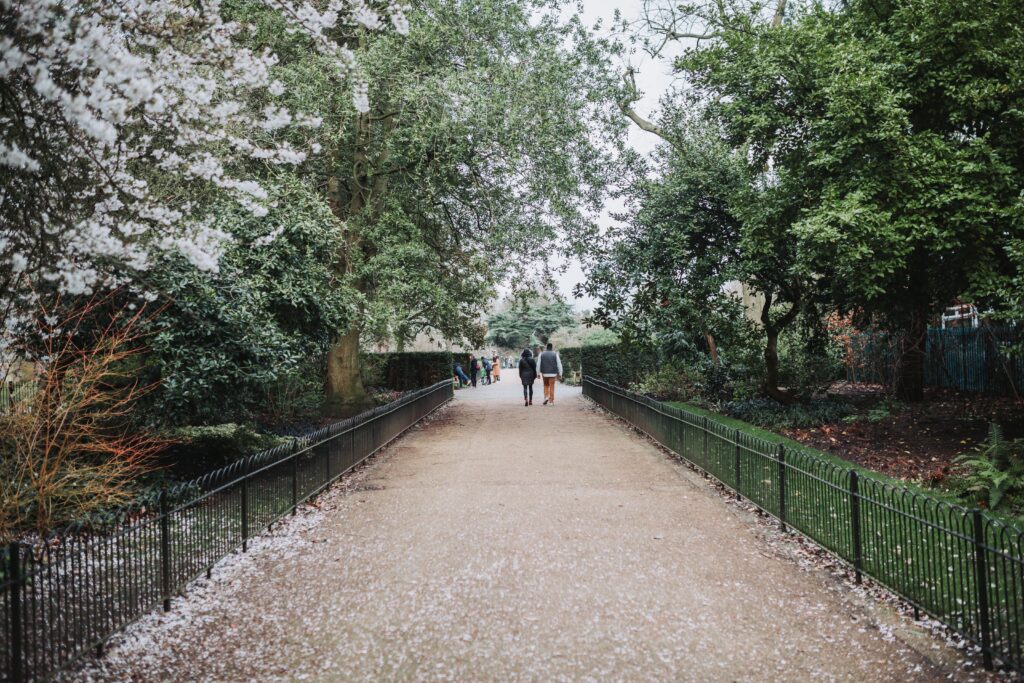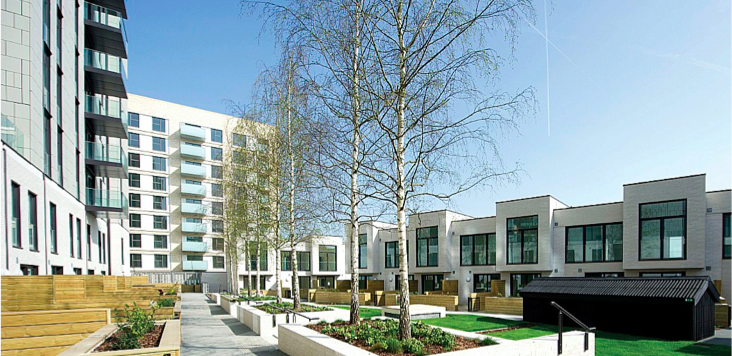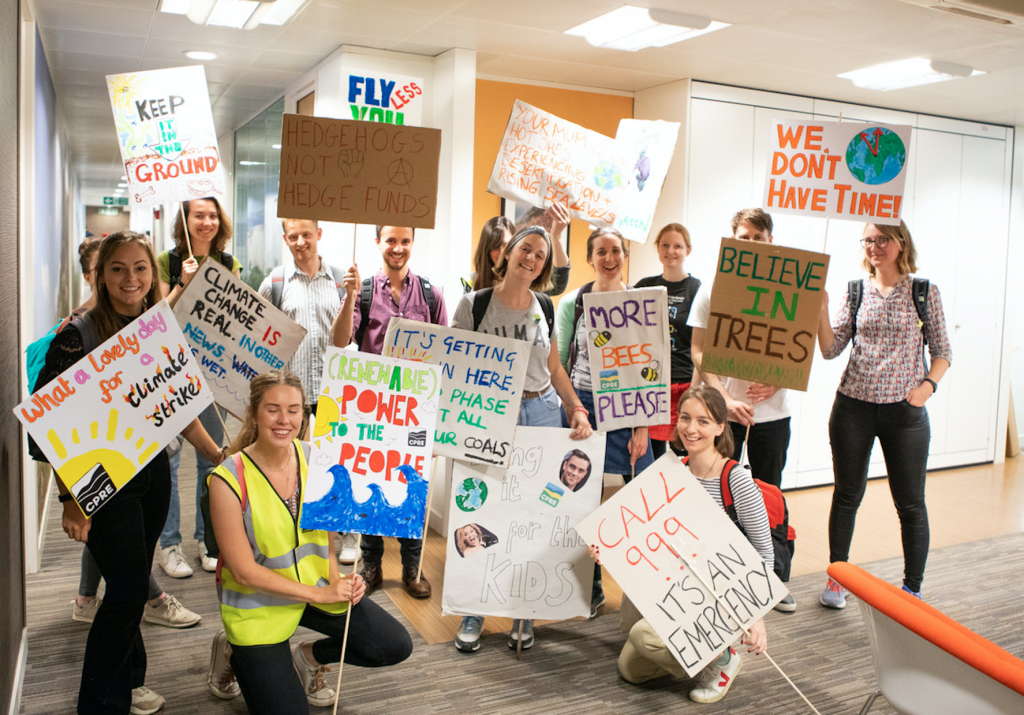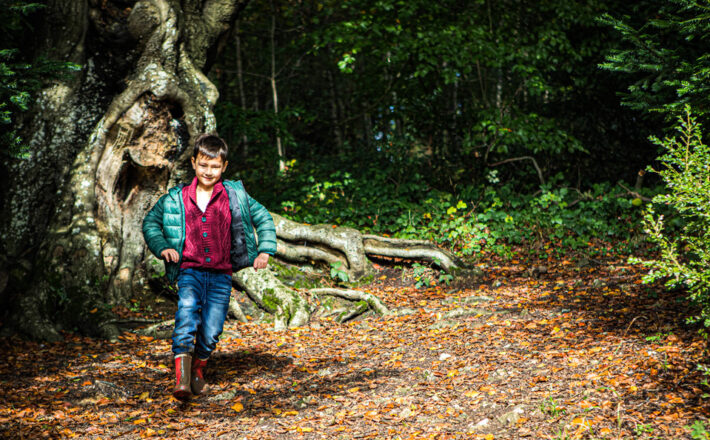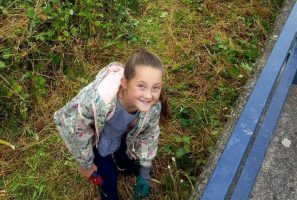London needs an “M25 of trees”
Our vision is a London Tree Ring – a kind of M25 for nature encircling the capital, with radial green routes connecting this to the centre, and sub-routes off these linking people in the most green deprived areas to London’s countryside. Community woodlands and other treescapes such as nature friendly orchards, ornamental trees and hedgerows will absorb pollution, cool the environment, and provide a safe corridor for wildlife. The London Tree Ring will help more residents and visitors to enjoy the tranquil countryside on their doorstep.
We have worked with Greenspace Information for Greater London to map how connectivity can be achieved around the capital – linking existing woodland with key opportunities for new woodland creation based on underlying habitat and recorded land-uses, deprioritizing sites with other precious habitat or where land-uses are less likely to be compatible with woodland creation. Prioritisation has been given where afforestation could potentially contribute to addressing areas where access to quality green space is currently lacking, or where new planting could contribute to natural flood risk reduction.
We have also gathered details of over 100 specific sites suitable for treescape creation with input from community members, community groups and local green space staff. If you know of sites near you that could benefit from new trees please email woodlandcreation@cprelondon.org.uk. We would love to hear from you! This is not restricted to opportunities for extensive new areas of native woodland (although these are of particular interest).
We are also keen to hear about:
- Opportunities, however modest, for planting or allowing natural regeneration on the buffer lands around existing wooded areas or linking up wooded areas, expanding these areas of habitat – helping make the wildlife that inhabit them more resilient to climate change.
- Opportunities for tree planting in the land bordering London’s many rivers and streams – contributing to natural flood risk reduction and helping improve water quality.
- Opportunities for substantial planting near major roads in order to help improve air quality
- Areas of disused greenspace that has been fenced off, and possibly allowed to become fly-tipped, and so become an eyesore rather than a local asset
- Areas of fairly featureless species-poor grassland (not, for example, more precious chalk or acid grassland) where the addition of wooded areas, ornamental trees or orchard could provide more diversity and interest.
- Room in allotment areas for new orchard or nut trees, potentially to shade picnicking areas in which allotment holders can socialise as well as opportunities for planting fruitful edible hedgerows.
- Room around the periphery of playing fields to create wooded areas to provide shade to supporters on hot days and a place for players to retreat after the game for a sun-break. Wooded areas can also help diversify who uses these sites by providing nature rich walkways for those not actively involved in team sport.
- Areas in cemeteries with potential to become woodland burial areas where a tree is planted instead of erecting a gravestone – contributing to a better future for coming generations.
- Opportunities to decontaminate old landfill sites, providing large quantities of additional top soil and planting trees to help minimise erosion.
- Opportunities to make agricultural land more nature friendly through addition of wooded wind breaks, hedgerows or tree based fruit and nut crops.
- Opportunities for planting hedgerows – a highly space efficient form of carbon capture that can have the added benefits of providing nature rich wildlife corridors, helping screen off busy roads and contribute to reduced air and noise pollution or hiding unsightly fences or development.
Opportunities put forward will be investigated further and shared with all the major organisations involved in tree planting in the capital to explore how they could best be taken forwards. We will also be making our research available to feed into London’s Nature Regeneration Strategy and sharing it with local authorities to inform their Local Plans and Biodiversity Action Plans.
Those interested in getting hands-on with planting or helping care for treescapes should email laura@cprelondon.org.uk about joining a local friends of greenspace group. Or if there isn’t one in your area, but you know of a site that would benefit from trees and would like to help practically with making your vision a reality – contact Laura who can support and advise you.
The project directly addresses key requirements of the London Urban Forest Plan – to create more woodland, especially species-rich woodland, in London.
CPRE London is currently actively pursuing ‘Forest for the Nation’ status for London in partnership with other green space organisations working across the capital. If successful, this will help us substantially accelerate the rate of planting in the capital. We think 1,000 additional hectares of tree cover, which is at least 1 million more trees, is achievable by 2030.
Woodland creation opportunity mapping work
We are grateful to the Mayor of London for supporting our work in partnership with GiGL mapping green belt woodland creation opportunities and undertaking research that has informed this campaign. This is part of a broader project for which the GLA has funding through the Trees Call to Action Fund. The fund was developed by Defra in partnership with the Forestry Commission and is being delivered by the Heritage Fund.

